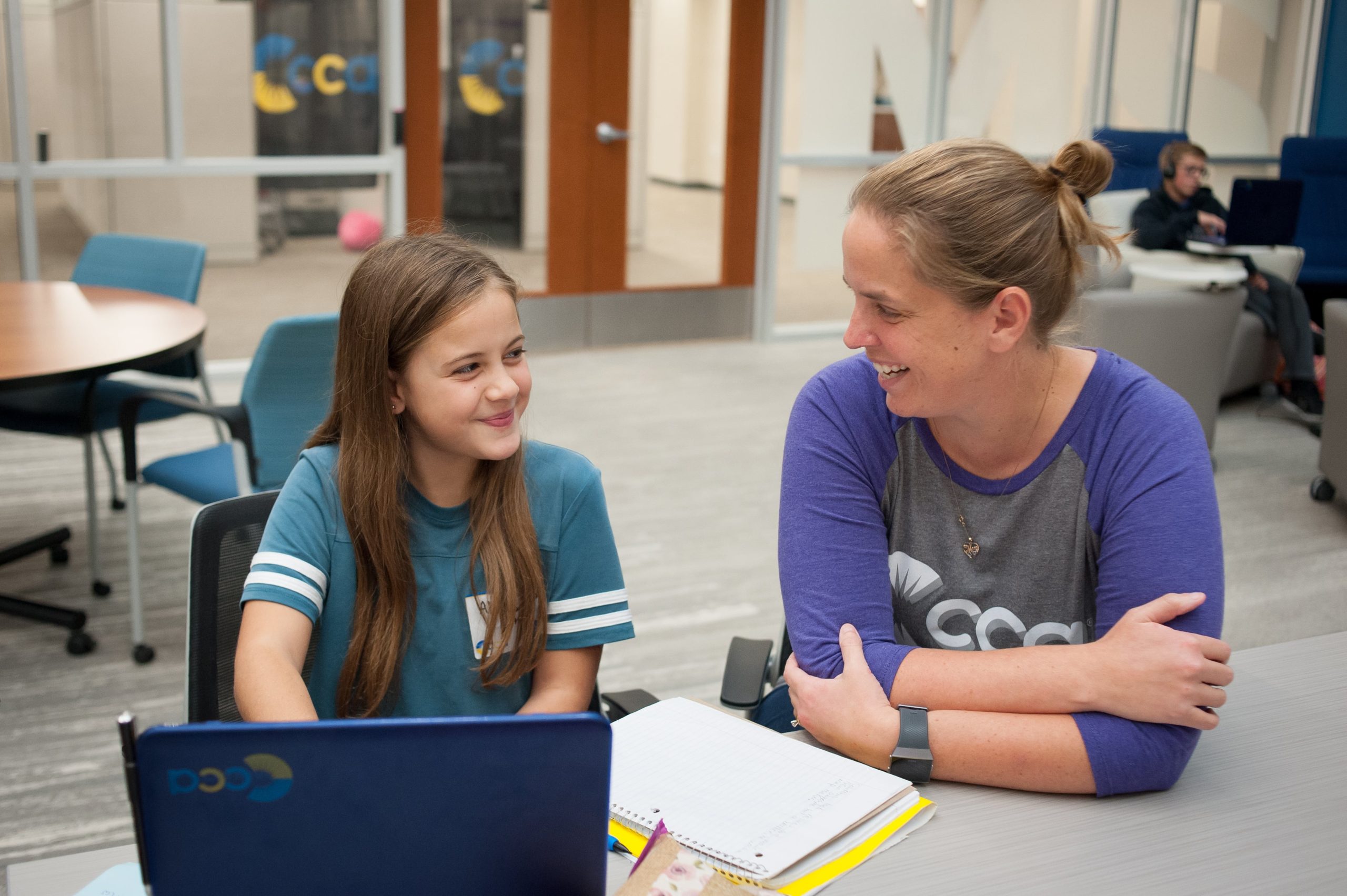2025-2026 School Year Enrollment Now Open. Click Here
2025-2026 School Year Enrollment Now Open. Click Here

Family. Home. Personal growth. Human connections.
The pandemic year of 2020 crystallized the things that are most important to us. A year of upheavals also made us think differently about old notions. Are the traditional ways of doing things really the best?
Suddenly, families all around the world discovered that school doesn’t have to be confined to a classroom. Online education is becoming more popular. Children can bloom where they’re planted. The future of online education is here, right now. Learning that comes into the home can be more enriching and fulfilling. The key to success, though, is personalization of learning to the student’s needs and interests, and delivery by trained teachers who know how to make online learning an engaging experience.
The era of online learning arrived with a bang in millions of homes. Even as families adjusted to a new normal, many realized that distance learning was benefiting their kids. Their children were free from the distractions of the traditional school day — the wasted time, the bullies, the lack of attention to their unique needs, the cliques and the drama. At home, children could concentrate on their lessons and spend their time pursuing their own interests.
In short, serendipity introduced many parents and students to the benefits of online learning and its compatibility with family life and values. Is online learning the future of education? Here in the 21st century, the answer is yes.
As the World Economic Forum put it, “The COVID-19 pandemic has changed education forever.” Even before 2020 global investments in education technology reached $18.6 billion, and the overall market for online education is expected to reach $350 billion by 2025. Clearly, online learning was already becoming mainstream. When the pandemic sent more than 1.2 billion children globally out of the classroom, the trend accelerated.
In the pivot to distance learning, teachers, kids and families discovered new strengths in themselves. Teachers and students found it easier to communicate in real time. Children learned to take responsibility for their own progress. Parents gained a voice in their children’s education.
Naturally, challenges remain, but the shared experience demonstrated that distance learning is a viable option that can be more effective than traditional learning. As the World Economic Forum also notes, online learners retain 25 to 60 percent of material versus the classroom average of only 8 to 10 percent. In fact, online learning requires 40 to 60 percent less time than traditional classroom settings. Clearly, the era of online learning has arrived, and it is alive and well.
There was a time when the traditional classroom made sense for most children. Professional teachers had the skills and the knowledge to guide children up the ladder of grade levels. Schools offered textbooks that weren’t in the family library. Blackboards were considered advanced technology for efficiently conveying new concepts to groups of learners. Children could gather to help and support each other.
Today, all of those purposes and uses can be condensed to a 14-inch screen. The best, most highly qualified teachers can come to your child, instead of the other way around. A simple online search brings up a world of knowledge. Children get together virtually from the safety of their homes.
Technology has produced computers durable enough to stand up to kids but more powerful than the NASA systems that sent men to the moon in 1969. In the meantime, educators are learning how to deliver a rich learning experience through virtual contact and online resources. Teachers are customizing learning to the needs of every student, instead of plowing ahead or slowing down to meet a classroom timeline, which inevitably leads to students who fall behind or get bored waiting for classmates to catch up. The move toward digital learning has made it clear that children don’t necessarily need a traditional classroom for learning and educational success.
What makes online learning unique — and effective? At CCA, it’s technology in the hands of skilled educators. Cyber schools engage the entire family in guiding children toward academic achievement while preparing them for lifetime success after graduation.
The features of online learning make it a perfect fit for children and families who want a quality education but can’t find one to fit their unique circumstances. At CCA, benefits include:
The future of education is dynamic, personalized and hands-on. It just so happens that CCA schooling is all that and more. CCA students learn from each other and the world around them, through the CCA commitment to meeting the needs of the whole child.
Consider these programs that amplify the benefits of online learning.
Online education is becoming more popular because it brings personalized, flexible education to your home. Studies show that online learning is breathtakingly efficient, helping your child retain more knowledge in less time. Online learning dispenses with stuffy, outdated ideas of school — no classroom needed! Your child benefits from a rich curriculum and vibrant programs, all delivered at an individualized pace, and without the drama of the traditional brick-and-mortar school. School becomes exciting again, because students pursue their own interests and see for themselves how learning leads to knowledge and accomplishment. Contact CCA today to find out how online education helps your child learn and grow.
2025-2026 School Year Enrollment Now Open. Click Here